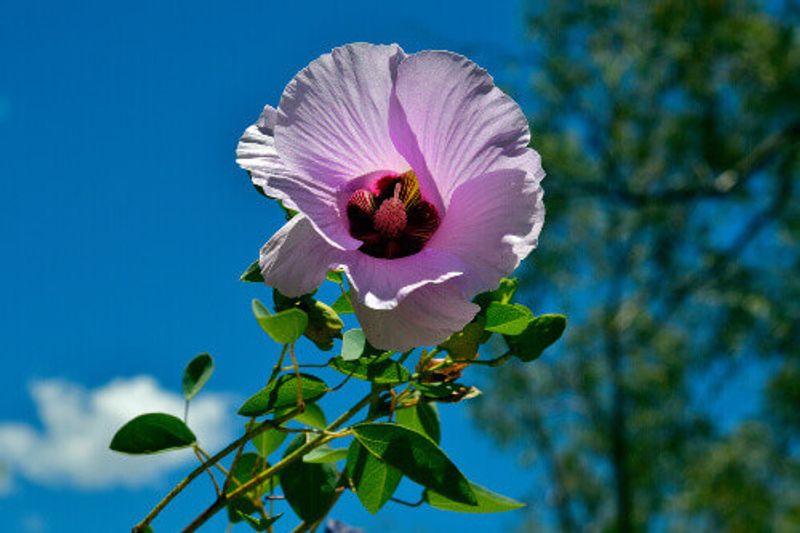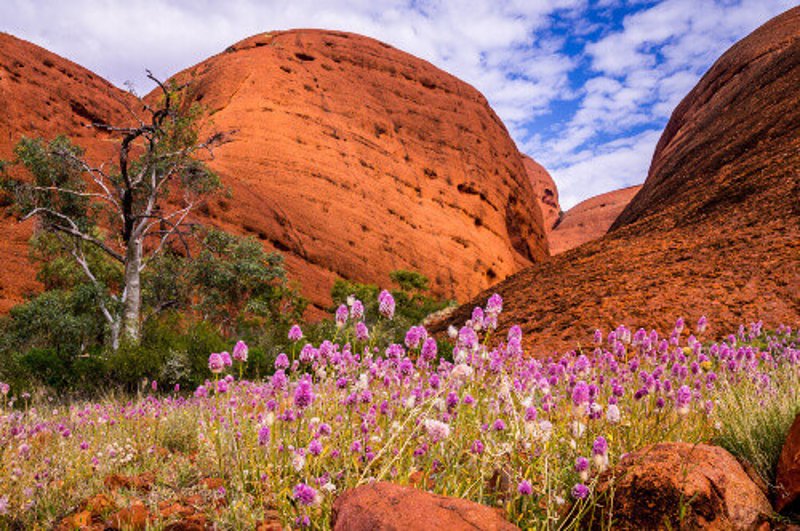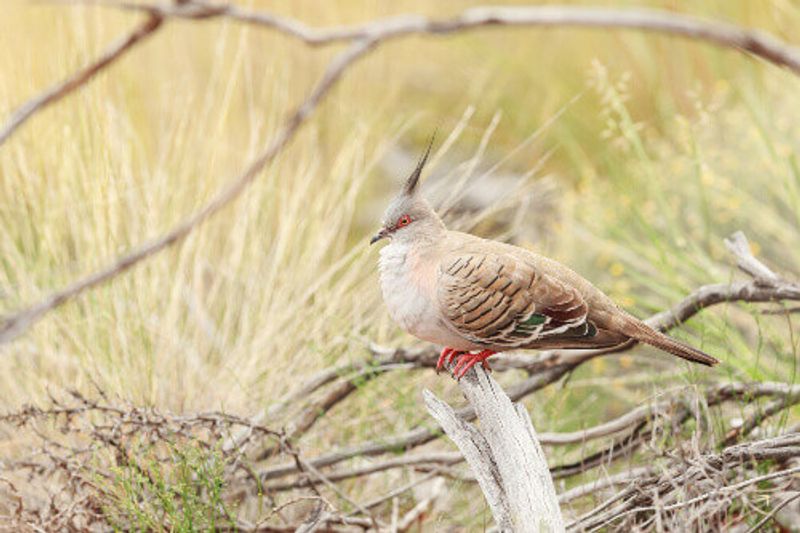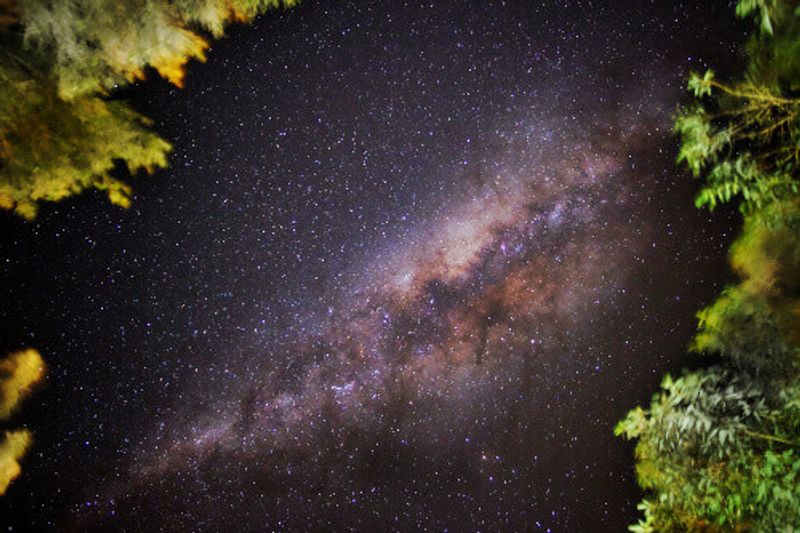Forget the idea of dusty red earth as far as the eye can see, the Central Australian landscape offers an extraordinary chance to see unique plants and animals
Five seasons in one year
With very little rainfall each year (just 291 mm on average), it would be easy to assume that semi-arid Central Australia has only one season: dry and hot. Or maybe two: dry and very, very hot, and dry, hot and freezing. In summer, the temperatures can be extreme with scorching days and cool nights, and in winter milder (but still hot) daytime temperatures are matched by icy nights. While extreme and potentially dangerous for unprepared travellers, the climate and remote location means that most visitors are lucky enough to experience the crisp clear air, cloudless days and starry starry skies Central Australia is famous for.
While the concept of summer and winter may give visitors a rough idea of temperatures at different times of the year, it misses the nuance of the changing landscape and weather.
“The colours on the landscape change along with the plants and animals, you also have to consider that Anangu recognises five seasons compared to our four,” says Steven Baldwin, Manager of Park Operations and Visitor Services at Uluru-Kata Tjuta National Park.
Instead of two distinct seasons, the Anangu prefer to describe these changes in five periods of various lengths that take into account the wind, breeding seasons, availability of food and water, animal behaviour, cloud formation, and frost and rain that in turn informs the way they live, eat and manage the land.
Rain in Central Australia? It does happen.
“It does not rain very often but when it does it’s incredible,” says Baldwin. “The waterfalls off Uluru are spectacular. You have around 15 minutes after it stops raining to see the waterfalls. There can be dozens and dozens around the rock.”
Wet weather transforms the national park says Baldwin. “[There are also] amazing wildflowers that can come out after rain or the cascading waterfalls on the monolith and the sounds of hundreds of frogs.”
Land in bloom
As the year passes, a wave of colour moves across the plain that surrounds Uluru and Kata Tjuta. Depending on the time of year, you may see purple, yellow and endless varieties of green. Up close, winter brings tiny desert flowers in white, pink and red while the horizon is dotted with the mulga’s (wattle) fluffy yellow blooms.
More than 400 types of plants are found in Uluru-Kata Tjuta National Park including Sturt’s Desert Rose, a cotton plant named after explorer Charles Sturt, who came across the flower on his exploration of Central Australia in 1844. Known as kalpir-kalpir in Pitjantjatjara, the bright pink Sturt’s Desert Rose will be familiar to anyone who knows the Territory well - it’s the official floral emblem and decorates the flag.
Other blooms to look out for include the pretty, striped white flower of the mint bush, often spotted on the Walpa Gorge Walk at Kata Tjuta, where pink daisies are also common. The Desert Heath Myrtle or Pukara, a hardy shrub, has tiny white and pink flowers that bloom in winter as does the honey grevillea with its bright yellow spikes of blossom. The plain may be flat but the landscape is not - expect to see tall desert poplars, oaks, and bloodwoods, shade-giving river red gums, quandongs and blue mallee as well as the spinifex that’s typical of the area.
Food and medicine
More than just a beautiful and colourful backdrop to Uluru and Kata Tjuta, these plants are also food and medicine for the Anangu. Think honey grevilleas and the dew from pukara bushes as a source of sweet nectar; desert oak seeds for roasting and eating; mintbush for healing wounds and treating colds and flu; delicious quandongs eaten straight from the tree; edible grubs that live under the bark of river red gums, and the trees’ nectar-producing flowers. The environment is a rich resource for those with knowledge and understanding. Free Uluru Bush Tucker Journeys walking tours at Ayers Rock Resort offer a chance to find out more about the Anangu’s deep plant knowledge.
Birds and animals
With all these plants and flowers, there is a wealth of birdlife, especially near water sources. Spot ring-necked parrots, rainbow bee-eaters, cockatoos and willy wagtails among many others. The rufus-hare wallaby, kangaroos, dingos, the spinifex hopping mouse, southern marsupial mole and brush-tailed mulgara all make their home in the area and you can also see snakes, geckos, lizards and frogs, depending on the season.
While camels, imported from the Canary Islands in 1840 and used for transport, are now considered a pest throughout the Northern Territory, the sight of camel trains leading tourists on sunset tours near the resort is a familiar part of the local scenery.
Starscapes
As much a part of the Uluru-Kata Tjuta experience as the park’s two extraordinary rock formations and its unique wildlife and natural beauty, looking up to scan the night sky offers just as fascinating insight into Anangu culture and the environment. Let a guide reveal the stories in the sky and how the stars have informed Anangu’s understanding of the seasons over millennia. You’ll start to understand the intricate connections between the land, the animals, the seasons, and their stories. You may have a sore neck from craning your head, but the discomfort is worth it. It’s truly magical.







